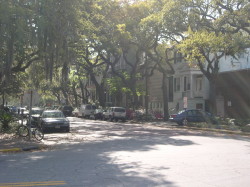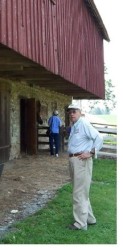We are currently updating the webpage and hope to have any issues resolved shortly.
Category Archives: Uncategorized
NBA Virtual Lecture #7: “Digital Documentation and Dissemination”
You Tube Link: NBA Virtual Lecture: “Digital Documentation and Dissemination”
“Digital Documentation and Dissemination: You Got a Point Cloud, So What”
Presented by Michael G. Spencer
The creation of measured drawings, especially of historic barns, can be a tough sell; yet traditional methods are time-consuming, cumbersome, and costly. While newer, mass-capture methods such as laser scanning offer efficiency in some areas over more traditional methods the technology still presents problems, particularly in usability of data. This lecture will examine some other documentation alternatives such as photo rectification and photogrammetry as well as the variety of ways in which the data can be used and disseminated to assist in the preservation of agricultural structures such as barns, including recent documentation of a log tobacco barn on Booker T. Washington’s farm in southwest Virginia.
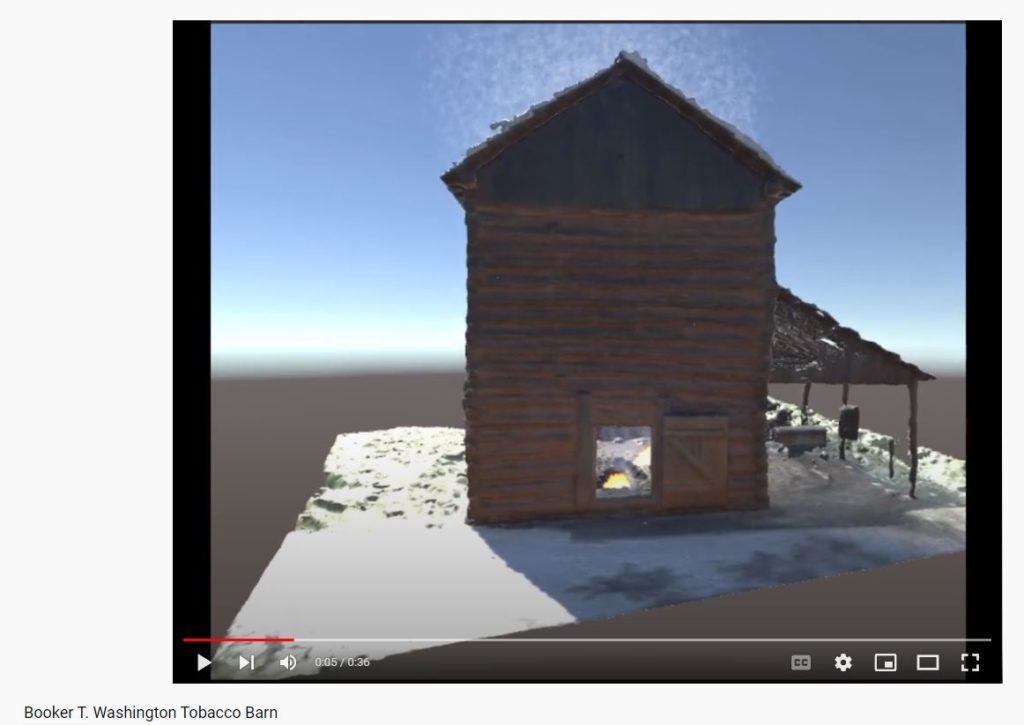
Michael G. Spencer is Chair of the Department of Historic Preservation at the University of Mary Washington where he teaches courses that focus on architectural documentation and conservation. His research has involved the exploration of non-destructive technologies such as infrared thermography, as well as new methods of documenting historic structures and evaluation of new platforms for dissemination of that data. Recently this research has centered on photo rectification, photogrammetry, 3D modeling, and virtual reality.
Learn more about Professor Spencer and his work at the University of Mary Washington here!
What We Can Learn About Historic Barns in America from a Decade and the Agricultural Census
Danae Peckler, architectural historian, Fredericksburg, VA
In 2007 and 2017—thanks to the lobbying efforts of a few National Barn Alliance (NBA) board members, particularly Rod Scott, and our great network of barn preservation advocates, including many active supporters of state and local preservation organizations—the United States Agricultural Department (USDA) put a simple question to the farmers of America’s working farms in the Agricultural Census: “Do you have a barn built prior to 1960?”
From the “yes” or “no” answers of those farmers, a set of statistics emerged to help advocates for the preservation of historic barns get a sense of just how many old barns existed within each state.
The data collected from this effort was far from perfect. For starters, it only gathered information from “working farms,” ignoring pre-1960 barns on farm properties that no longer meet that definition, as well as those that survive in suburban and urban areas. Furthermore, by answering just yes or no, farms with multiple pre-1960 barns were represented as a single unit. Yet the information gathered from this effort was a fine (if not the only) place to start. Obtaining these statistics was an attempt to quantify what is the largest problem facing barn preservation advocates: the size and scale of America’s agrarian landscape.
Acknowledging the limitations of what became known as “the barn question” in the 2007 Census, the NBA board of directors set about repeating the experiment a decade later in 2017. By asking the same exact question, we hoped to gain insight on the big question we are all looking to quantify: “How many old barns have we lost across the country?”
To find out, Rod Scott and I worked together two years in advance of the census to connect with officials at the USDA, drafted a sample letter for friends of old barns and barn preservation advocates to send the agency, and called on each of you to spread the word and lobby for the question’s return in 2017. And it worked!
Barn lovers from across the country heeded the call to action and the results became public in the Spring of 2019. To better digest the statistics, I created a table with an alphabetical listing of states to compare the results of “the barn question” from 2007 and 2017.
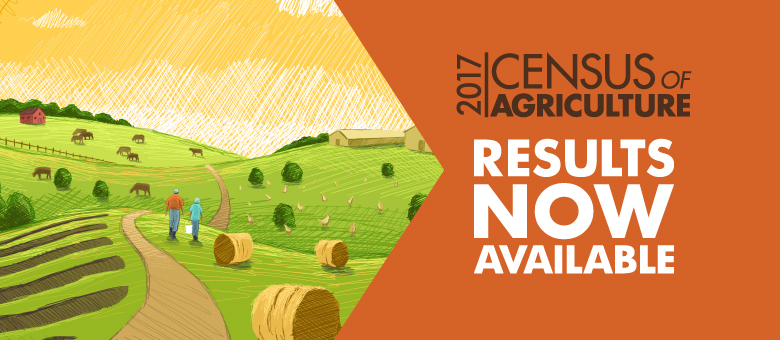
Not surprisingly, each and every state in the USA saw a decline in the number of working farms reporting at least one pre-1960 barn. And while we may be inclined to look for the biggest winners and losers by the figures, it is important to be mindful of their context. This is a count of “working farms” with at least one barn built prior to 1960 in each state (though county-level data is also available in Table 43, Special Characteristics!), and not every pre-1960 barn would be thought of as “historic” by many people’s standards, even those of professional preservationists.
Yet, however small this slice of the bigger picture may be, the limitations of these statistics should not stop us from using them to illustrate the loss that no one is willing to dispute: America’s historic barns (farms and outbuildings!) are disappearing at an increasing rate. And it will also surprise few that, in general, the number of working farms and farmers are also in decline.
A few takeaways from “the barn question” and the last decade from a national perspective:
- As a nation, 28 percent fewer working farms reported old barns on their properties.
- Individual states reported between 10 and 45 percent fewer working farms with at least one barn built prior to 1960, with a mean loss of 27 percent.
- In a handful of states, properties with a pre-1960 barn make up less than 10 percent of the total number of working farms.
- On the whole, less than a quarter of America’s working farms have a pre-1960 barn (the mean is 23 percent).
“Historic” or not, it is well past time that we started bending over backward to thoughtfully record and catalog the old barns and outbuildings that dot our farms from sea to shining sea. For preservation professionals that means getting inside the barn to note the specifics of its framing and learning to recognize common modifications that reflect popular agricultural practices. A good general book that I recommend for anyone across the country is Allen Noble and Richard Cleek’s The Old Barn Book: A Field Guide to North American Barns & Other Farm Structures (1995). Although more specific barn field guides and rural documentation sources can be found for different regions, states, and counties, The Old Barn Book is an easy read with great drawings from M. Margaret Geib.
As increasingly endangered cultural-historic assets of America’s greatest industry, the study of historic barns and farm buildings by preservation professionals has grown in the past 25 years since the NBA was founded. Yet the list of obstacles to preserving them grows faster.
How we justify their historical significance matters less and less—this is not a battle that will ever be won, it’s simply a matter of how much we stand to lose.
Related articles and pages that might be of interest:
NBA Goes on the Road to Savannah, GA!
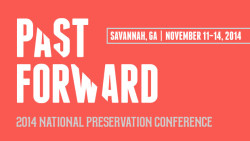 Here we go again! NBA Board Members and state barn organization partners are volunteering their time and energy to continue the NBA’s presence at the National Trust for Historic Preservation’s annual conference. This year, the action is in Savannah, Georgia, where we connect with preservationists of all kinds to engage them in conversations about saving America’s historic barns!
Here we go again! NBA Board Members and state barn organization partners are volunteering their time and energy to continue the NBA’s presence at the National Trust for Historic Preservation’s annual conference. This year, the action is in Savannah, Georgia, where we connect with preservationists of all kinds to engage them in conversations about saving America’s historic barns!
What does an urban landscape like Savannah have to offer barn lovers? We think the trip to the South has a lot of potential! The state of Georgia was one of the first to create an historic agricultural context to aid in the evaluation of farm properties for the National Register of Historic Places (NRHP). Anyone can download a copy of this context, entitled Tilling the Earth, and learn more about the types of agriculture practiced historically in the state. Vernacular agricultural studies are also common about students at the Savannah College of Design (SCAD), one of the NTHP’s local partners in conference activities.
Though we won’t be able to bring any of our barn models south this year, we will bring our fabulous 2014 t-shirts with the catchy phrase: “Vernacular is Spectacular: Save Our Barns!” After the conference, these t-shirts will be up for sale to great friends like you – they are sure to make great stocking stuffers for any barn lover!
Until then, plan to swing by our booth if you’re attending the NTHP conference and check out our hats, t-shirts, bumper stickers, and other helpful barn-preservation items to show your support for old barns!
Saying Goodbye to a Great Friend of Old Barns: Dr. William J. Kimball (1925-2013)
William J. Kimball PhD, or Bill as we knew him, recently departed this life at the age of 87 in Lansing, Michigan on May 24, 2013. He was born on October 6, 1925 to Elmer and Gladys Kimball in Seymour, Wisconsin.

